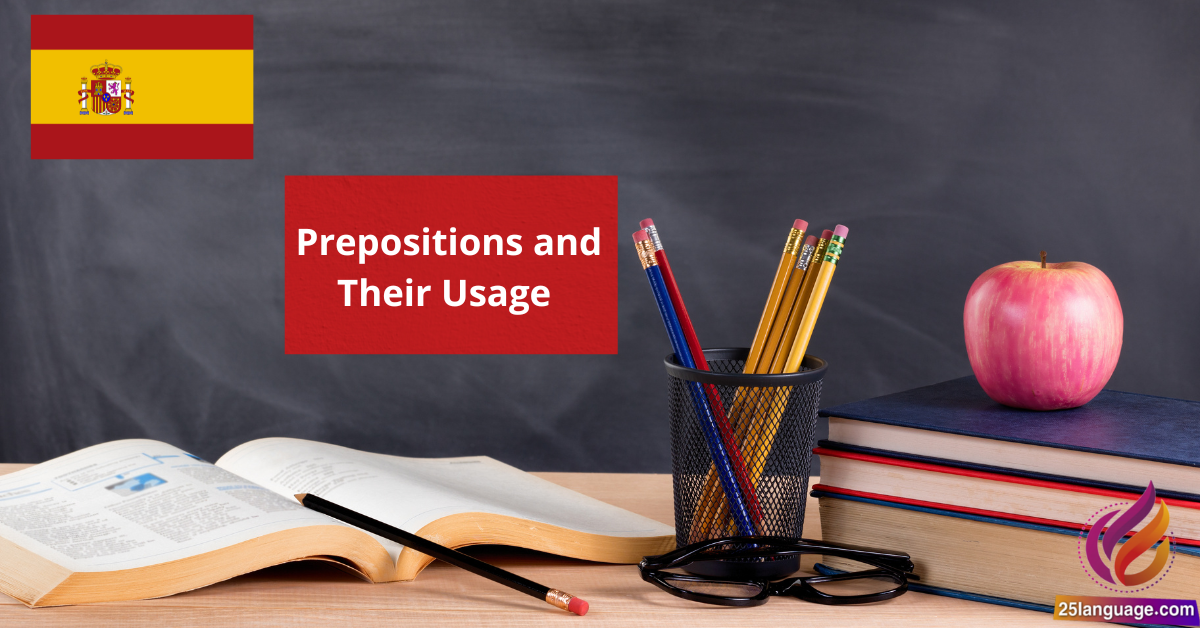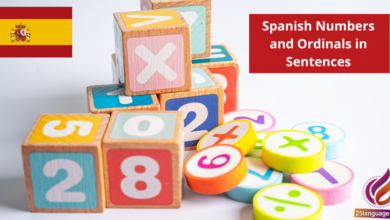Common Spanish Prepositions and Their Usage

Imagine the difference in interaction when you can effortlessly connect ideas, places, and actions in Spanish! Prepositions are the glue that holds sentences together, giving clarity and depth to your conversations. In this lesson, we’ll explore common Spanish prepositions, thier meanings, and how to use them effectively in everyday situations. Get ready to enhance your language skills and express yourself with confidence as we unlock the power of prepositions in Spanish!
Mastering Spanish Prepositions for Effective Communication
Understanding prepositions in Spanish is crucial for conveying the correct relationships between nouns, verbs, and phrases. Spanish prepositions can indicate direction, location, and time. Some common prepositions include:
- a (to)
- de (of, from)
- en (in, on, at)
- con (with)
- sin (without)
For example: Voy a la tienda translates to I am going to the store, indicating direction. Another example would be El libro está en la mesa, which means The book is on the table, showing location.
| Spanish Example | Preposition Rule | English translation |
|---|---|---|
| Voy a la escuela. | Indicates direction (to) | I am going to the school. |
| El regalo es de mi amigo. | indicates possession (of, from) | The gift is from my friend. |
| Estamos en casa. | Indicates location (in, on, at) | We are at home. |
| Salí con mi familia. | Indicates companionship (with) | I went out with my family. |
| Comí sin sal. | Indicates absence (without) | I ate without salt. |
Exploring the Nuances of Spanish Prepositions in Everyday Language
Understanding Spanish prepositions is crucial for mastering the language effectively. Prepositions are used to express relationships between words in a sentence, such as location, direction, time, and manner. Some common Spanish prepositions include a (to), en (in/on/at), por (for/by), and para (for/to). Here are some practical uses:
- A: Used to indicate direction or destination.
Example: Voy a la tienda. (I am going to the store.) - En: Used for location.
Example: Estoy en casa. (I am at home.) - Por: Used to express reason or motive.
Example: Lo hago por ti. (I do it for you.) - Para: Used to indicate purpose or destination.
Example: Este regalo es para ti. (This gift is for you.)
Along with the basic functions, some prepositions can have nuanced meanings depending on the context. As an example, por can imply duration of time, while para often conveys a deadline. Here are some examples to illustrate these distinctions:
| Spanish Example | Rule | English Translation |
|---|---|---|
| Estudié por dos horas. | Time duration with por | I studied for two hours. |
| debo terminarlo para el viernes. | Deadline with para | I must finish it by Friday. |
| Camino por el parque. | Movement through a location with por | I walk through the park. |
| Este libro es para aprender. | Purpose with para | This book is for learning. |
A Comprehensive Guide to Spanish Prepositions and Their Applications
Prepositions in Spanish are essential for indicating relationships between different elements of a sentence. They often denote location, time, direction, and manner. Some of the most common prepositions include:
- a (to)
- de (of, from)
- en (in, on, at)
- con (with)
- sin (without)
Such as, one could say Voy a la casa (I am going to the house), indicating direction, or El libro es de Juan (The book is Juan’s), showing possession. Understanding these prepositions will help learners construct meaningful sentences and convey their thoughts more clearly.
In some cases, Spanish prepositions combine with definite articles to form contractions. Notably, al (to the) is a contraction of a + el and del (of the) combines de + el. Here are a couple of examples:
| Spanish Examples | Rule | English Translation |
|---|---|---|
| Voy al parque | Contraction of a + el | I’m going to the park |
| La carta es del profesor | Contraction of de + el | The letter is from the professor |
Grasping these contractions is importent as they frequently occur in everyday conversation and writing, enhancing fluency and comprehension.
Practical Strategies for Using Spanish Prepositions with Confidence
Spanish prepositions are essential for constructing meaningful sentences, as they often indicate relationships between different elements. The most commonly used prepositions in Spanish include a (to), de (of, from), en (in, on), con (with), and por (for, by). It’s important to understand when and how to use these prepositions, as manny have specific contexts. For example:
- A: Used to indicate direction or destination.
- Voy a la tienda. (I am going to the store.)
- De: Indicates possession or origin.
- El libro es de Juan. (The book belongs to Juan.)
- En: Used for location or time.
- Estamos en casa.(We are at home.)
When using prepositions, it’s crucial to memorize certain collocations as they often do not translate directly. For example, in Spanish, we say “pensar en” (to think about) rather of “pensar de.” Here are some more examples that illustrate these common uses:
| Spanish Example | Rule | English Translation |
|---|---|---|
| Pensar en | To think about (not to think of) | to think about |
| Soñar con | To dream of | To dream of |
| confiar en | to trust in | To trust in |
Key Takeaways
hemos explorado hoy un aspecto essential del idioma español: las preposiciones. A lo largo de esta lección,hemos aprendido sobre algunas de las preposiciones más comunes,como “en,” “a,” “de,” y “con,” y cómo su uso correcto puede enriquecer nuestras conversaciones y escritos. Entender cómo y cuándo usar estas preposiciones es esencial para comunicar nuestras ideas de manera clara y efectiva.
Recuerden que la práctica es clave. No duden en aplicar lo que han aprendido en sus interacciones diarias, ya sea al hablar con amigos, escribir en un diario, o incluso al leer en español. A medida que integren estas preposiciones en su vocabulario, verán cómo su confianza en el idioma crece.
Les animo a seguir adelante con el aprendizaje del español, explorando nuevas estructuras y vocabulario. Cada paso que den los llevará más cerca de la fluidez. ¡Felicitaciones por su esfuerzo hoy, y sigan practicando! ¡El mundo hispanohablante les espera!





























